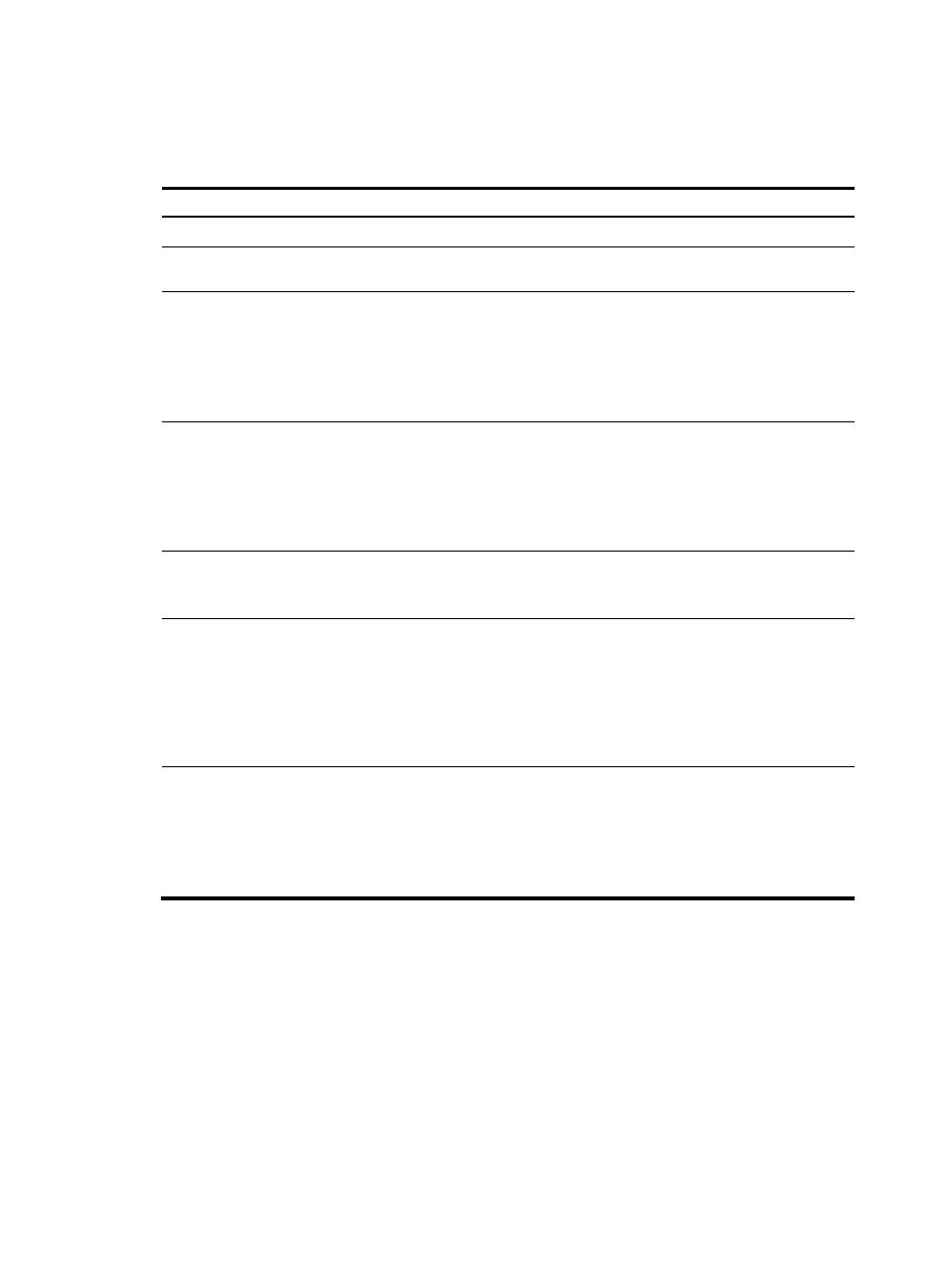Configuring the http template – H3C Technologies H3C S6300 Series Switches User Manual
Page 149

136
The TCP operation requires both the NQA server and the NQA client. Before you perform a TCP
operation, configure a TCP listening service on the NQA server.
To configure the TCP template:
Step Command
Remarks
1.
Enter system view.
system-view
N/A
2.
Create a TCP template and
enter its view.
nqa template tcp name N/A
3.
(Optional.) Specify the
destination IPv4 or IPv6
address of the operation.
•
IPv4 address:
destination ip ip-address
•
IPv6 address:
destination ipv6 ipv6-address
By default, no destination IP
address is specified.
The destination IP address must
be the same as the IP address of
the listening service configured
on the NQA server.
4.
(Optional.) Configure the
destination port number for the
operation.
destination port port-number
By default, no destination port
number is configured.
The destination port number must
be the same as the port number of
the listening service on the NQA
server.
5.
(Optional.) Specify the
payload fill string for requests. data-fill string
The default setting is the
hexadecimal number
00010203040506070809.
6.
(Optional.) Specify the source
IPv4 or IPv6 address for the
probe packets.
•
IPv4 address:
source ip ip-address
•
IPv6 address:
source ipv6 ipv6-address
By default, no source IP address is
specified.
The source IP address must be the
IP address of a local interface,
and the interface must be up.
Otherwise, no probe packets can
be sent out.
7.
(Optional.) Configure the
expected data.
expect data expression [ offset
number ]
By default, no expected data is
configured.
The expected data is checked
only when you configure both the
data-fill command and the
expect-data command.
Configuring the HTTP template
A feature that uses the HTTP template creates and starts the HTTP operation to measure the amount of
time it takes for the NQA client to obtain data from an HTTP server.
The expected data is checked only when the expected data is configured and the HTTP response
contains the Content-Length field in the HTTP header. The Content-Length field indicates the packet body
length, and it does not include the header length. An HTTP packet with this field indicates that the packet
data does not include the multipart type and the packet body is a data type.